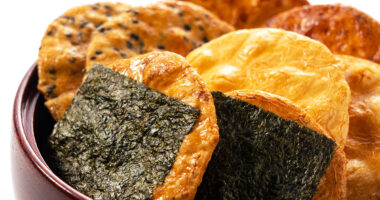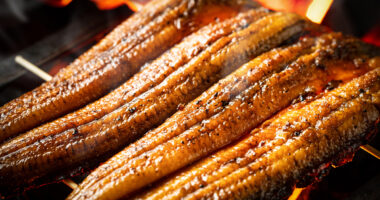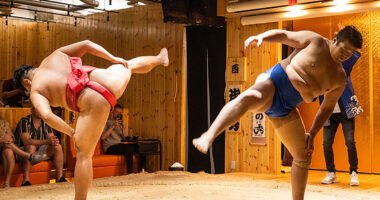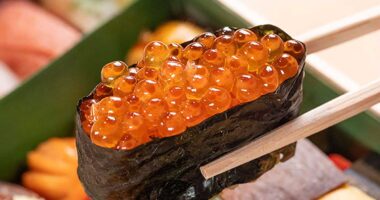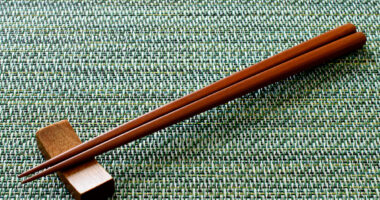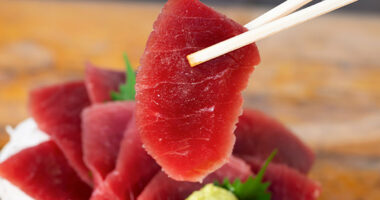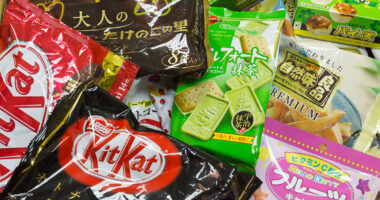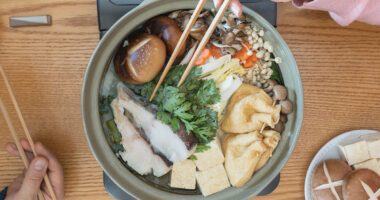When it comes to classic winter dishes in Japan, nothing beats nabe—hot pot. Made with a wide variety of simmered vegetables, meats, and seafood, nabe is a bubbling hot pot that warms both body and soul.
Loved as a home-cooked comfort food, nabe also varies from region to region, with local ingredients and seasonings giving rise to an incredibly diverse range of flavors.
From yosenabe (a mixed hot pot with various ingredients) and sukiyaki to shabu-shabu, mizutaki (a simple chicken-based hot pot), and kimchi nabe, each hot pot has its own unique appeal and history.
A quick primer on nabe cuisine!
Nabe hot pot dishes are incredibly rich and varied, making them hard to sum up in just a few words.
But once you understand the basics, you’ll enjoy eating them at restaurants—or even making them at home—all much more.
Here’s a quick guide to the essential knowledge you need to get the most out of Japanese nabe cuisine.
History of nabe in Japan: starting from the Edo period?
The origins of nabe cooking in Japan trace back to the Jōmon period (c.14,000 and 300 BCE), when earthenware was first invented. At the time, pots were used simply as tools for boiling ingredients.
Centuries later, during the Edo period (1603–1868), it became common to cook food in a pot and then serve it directly from there.
Alongside this, the practice of sharing one hot pot among several people—gathered around the table—began to spread as part of the dining culture.
In the Meiji period (1868-1912), the introduction of gas stoves brought further change to how hot pot dishes were prepared and enjoyed.
Unlike in the Edo period, when irori (hearths) were the norm, gas stoves made it possible to cook hot pot meals directly at the table, making the experience more communal and interactive.
As hot pot cooking became easier to enjoy at home, the style of gathering around a single pot with family or friends quickly spread—becoming a tradition that continues to this day.
Meant to share? Or a solo dish?
Looking at its history, it’s easy to assume that nabe is meant for large groups—but in modern Japan, dining habits have diversified.

MATSUGORO Hitori Shabu Shabu is a nabe restaurant with counter seating only
At “MATSUGORO Hitori Shabu Shabu” in Shinjuku, all seating is at the counter, and each person gets their own pot. You can enjoy the same one-pot-per-person style at “Shabu-Shabu Retasu” in Shibuya as well.
As dining styles have evolved, so have the options—this individualized approach is a clear sign of how hot pot culture has adapted in modern times.
That said, sharing a pot with a group is still one of the biggest joys of nabe. Even today, many restaurants require a minimum of two servings when ordering hot pot dishes.
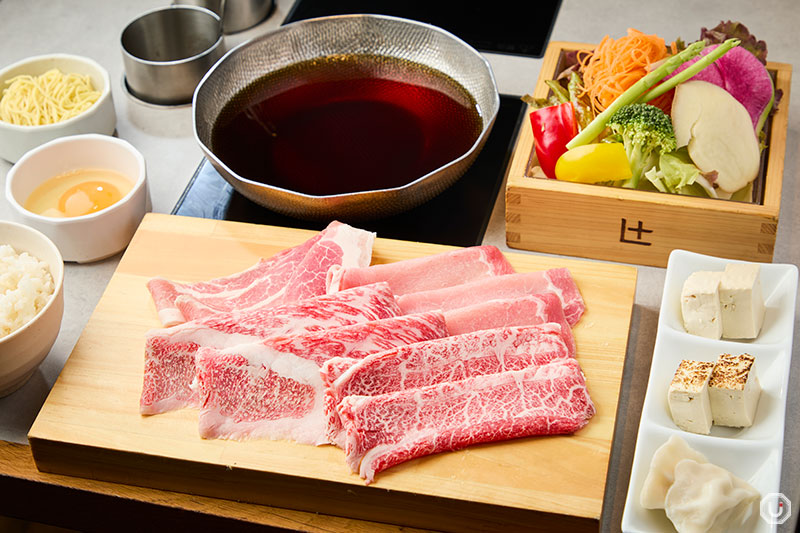
Shabu-Shabu Retasu offers solo hot pots at both counter and table seats
Types of nabe: ingredients and recipes
From sukiyaki and shabu-shabu to even oden, nabe is a broad term that encompasses a wide variety of styles.
One of the great appeals of hot pot is the endless variety that comes from different combinations of ingredients and broth. This flexibility—without strict rules for what to include—has allowed families to develop their own unique flavors and traditions at home.
At the same time, there are several classic and well-known types of hot pot that serve as the foundation of the cuisine.
- Mizutaki: A hot pot dish originating from Hakata. Chicken is simmered from cold water to create a rich broth. Main ingredients typically include chicken and vegetables.
- Shabu-shabu: Made with water or a light broth, though many variations exist today. Thin slices of meat and vegetables are briefly swished in the broth and eaten with sesame sauce or ponzu.
- Chanko-nabe: A hot pot with origins in sumo culture. The broth is typically made from chicken, with soy sauce, miso, or salt-based seasonings. While chicken is standard, it can also include pork, beef, or seafood.
- Yosenabe: Usually made with a seafood-based broth, but sometimes seasoned with soy sauce, miso, or salt. A wide variety of ingredients like meat, seafood, and vegetables are used.
- Kimchi-nabe: A modern hot pot variety with a Korean influence made with a spicy broth. Kimchi and various ingredients are simmered together to create a bold, flavorful dish.
- Sukiyaki: Said to have originated in the Edo period, this hot pot features a sweet-savory broth called warishita, made from soy sauce, mirin, and sugar. While beef is the standard, pork is used in some regions.
- Oden: Made by simmering daikon radish, eggs, konnyaku (firm jelly made from konjac yam), and fish cakes in a light broth. The flavor of the broth varies by region and shop.
From tradition to trend: best places to eat nabe in Tokyo
Sukiyaki is a classic Japanese hot pot that has long been loved across the country, and it’s not uncommon for specialty restaurants to have histories spanning over 100 years.
Many of these long-established shops preserve tradition by sticking to the same lineup of ingredients and recipes passed down since their founding. At the same time, newer shops are reinventing nabe with modern twists and visually striking presentations.
Here are five must-try hot pot hot spots we discovered in Tokyo
Mo-Mo PARADISE: so many nabe broths to choose from!
Shabu-shabu was traditionally made with plain water or a light broth.
However, over time, restaurants have expanded their soup options, with many now offering a wide variety of flavorful broths.
At the Shinjuku East Exit location of “Mo-Mo PARADISE”—a chain with locations overseas as well—you can choose from four different soup bases.
From light and refreshing to rich and deeply flavorful, their lineup caters to a wide range of tastes, offering a truly satisfying hot pot experience.

(left) shabu-shabu broth, (right) sukiyaki broth
If you prefer something light and clean, go for the shabu-shabu made with a delicate oxtail broth.
For a richer flavor, try the sukiyaki, which uses a sweet-savory warishita sauce made from naturally brewed soy sauce without additives and Okinawan black sugar. Another bold option is the salt tonkotsu, featuring deep layers of umami from pork, seafood, and vegetables.
If you’re after something with a kick, the spicy kimchi broth offers a mellow heat that adds a flavorful accent to the ingredients.

IKUSHIKA: wagyū beef, uni, and ikura all together!
While many nabe dishes stick to classic combinations, the flexibility of hot pot also allows for innovation.
“IKUSHIKA” in Shibuya serves a luxurious nabe that blends land and sea: their “Premium Sukiyaki Set” features wagyū beef, uni (sea urchin), and ikura (salmon roe).
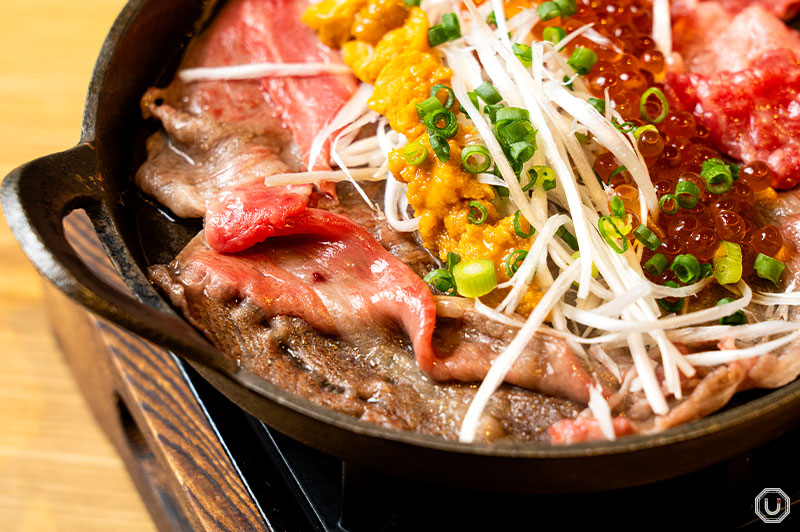
Premium Sukiyaki Set at IKUSHIKA
The tender wagyu is simmered in a soy-based sauce, developing a rich depth of flavor.
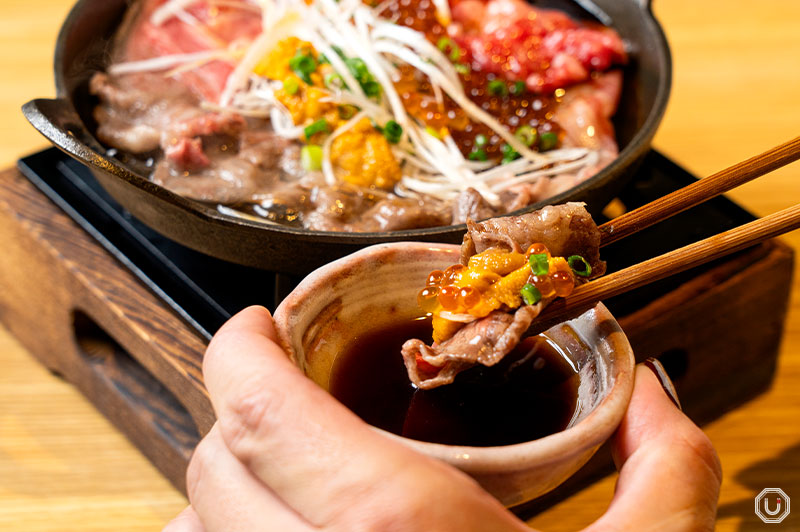
Premium Sukiyaki Set
Usagiya: kawaii hot pot made for social media
The shabu-shabu at “Shabu-shabu Honpo Shinjuku Usagiya” is a perfect example of how nabe cuisine has evolved in modern times.
When you choose the “Kombu” (kelp) broth from their selection of soups, you can add the adorable “Usapyon Dashi” (this can be translated as “Bunny Hop Dashi”) for just 550 JPY (tax included).
Once heated, the cute rabbit-shaped “Usapyon” slowly melts into the pot, transforming into a flavorful shabu-shabu broth.
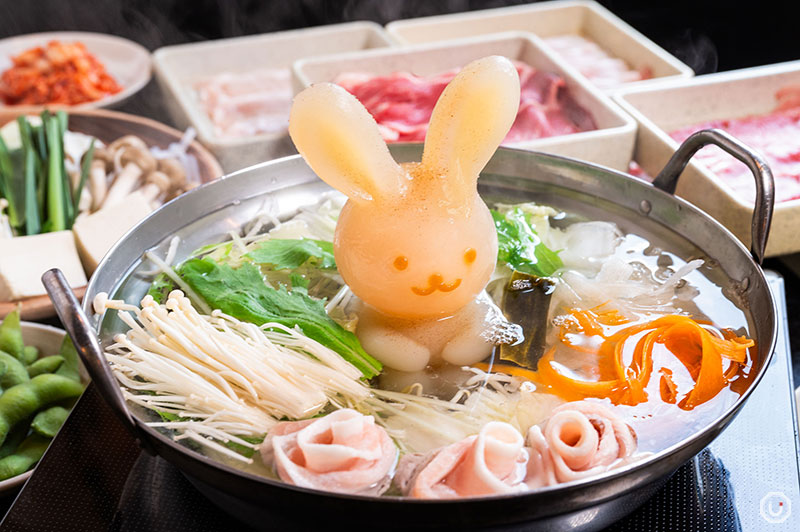
Instagram-worthy presentation
As the name suggests, the Kombu broth is made from kelp, allowing the natural flavors of the meat and vegetables to shine through, with a clean, refreshing finish. The Bunny Hop Dashi is also based on kombu broth, but adds a deeper richness to the soup overall.
Since it often sells out, it’s best to reserve it in advance if you want to try it!
Ryotei Tokibayama: authentic chanko nabe from a sumo wrestler
Today, chanko nabe, a hearty hot pot dish, is widely enjoyed by the general public, but it originated in the sumo stables where wrestlers trained and lived.
Originally, the word chanko referred to all types of meals served in sumo stables, but it was the hot pot version that gained widespread popularity and recognition.
As a result, the term chanko-nabe came to specifically refer to the stables’ hot pot dishes. Today, you’ll find many restaurants specializing in chanko nabe near Ryōgoku Station—home to the Ryōgoku Kokugikan, where major sumo tournaments are held.

The traditional Japanese interior of Ryotei Tokibayama
One of the rules that determines the outcome of a sumo match is whether a wrestler touches the ground with any part of the body other than the soles of the feet. Because of this, it’s considered good luck to use two-legged animals—like chicken—for the soup broth and ingredients, since these animals stand only on their legs.
At “Ryotei Tokibayama,” founded by former sumo wrestler Tokibayama, this tradition is faithfully followed. The hot pot features chicken thigh and chicken meatballs as the main proteins, along with a generous serving of seasonal vegetables.
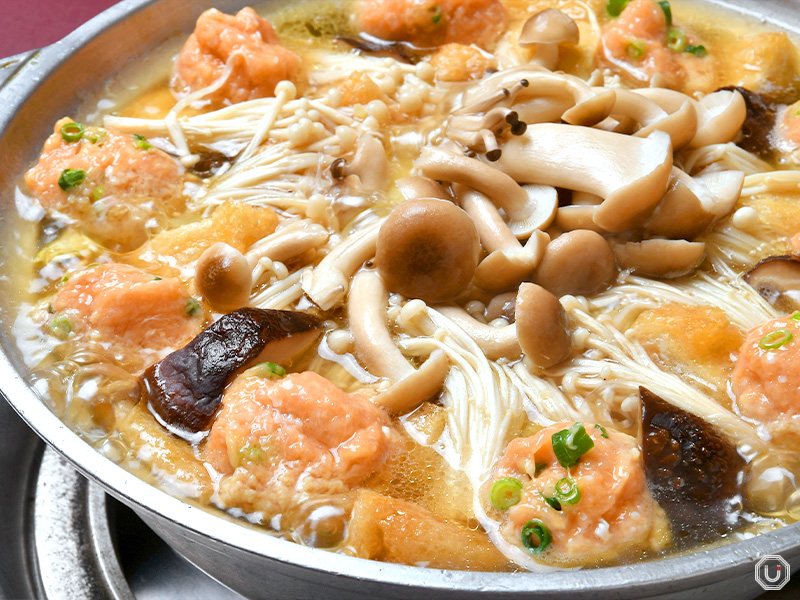
Hearty and nutritious—chanko nabe is full of nourishing ingredients
Nowadays, chanko nabe has become widely popular, and its ingredients vary by restaurant—ranging from pork and beef to seafood. However, when you know that the dish originally comes from sumo stables, it naturally sparks even more interest.
Being able to enjoy authentic chanko nabe inside a traditional Japanese home-style setting with an old-fashioned atmosphere is what makes the dining experience so great at Ryotei Toikbayama.
Choi Oden: customize your own flavor with toppings
When winter hits, oden becomes one of Japan’s signature comfort foods—often sold even at convenience stores. A wide variety of ingredients, simmered in richly flavored broths unique to each shop, makes it a fun and customizable dining experience.

Oden at Choi Oden
Choi Oden, which has locations in Tokyo, Kanagawa, and Akita, puts a creative twist on traditional oden by adding unique toppings to the classic style.
The base offerings include familiar favorites like daikon, eggs, and various fish cakes such as hanpen.
But for just 110 JPY each (tax included), you can add toppings like “Mentaiko butter,” “Blue Cheese,” and “Genovese” sauce—instantly transforming the flavor into something more Western-inspired.
The broth, made from the refined flavor of high-quality hamo (daggertooth pike conger eel), is light yet packed with umami, offering a clean finish that complements the bold toppings beautifully.
With these inventive options, you can easily tailor your oden experience to match your personal taste.

“Blue Cheese” topping
Hot pot dishes in Japan continue to evolve—honoring tradition while embracing new trends along the way.
Though especially popular in winter, their comforting, versatile appeal makes them something you’ll crave all year round.
※Information in this article is current as of June 2025


